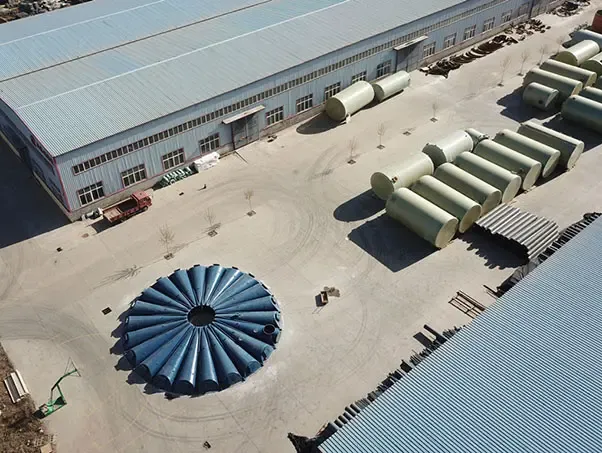
-
 Afrikaans
Afrikaans -
 Albanian
Albanian -
 Amharic
Amharic -
 Arabic
Arabic -
 Armenian
Armenian -
 Azerbaijani
Azerbaijani -
 Basque
Basque -
 Belarusian
Belarusian -
 Bengali
Bengali -
 Bosnian
Bosnian -
 Bulgarian
Bulgarian -
 Catalan
Catalan -
 Cebuano
Cebuano -
 China
China -
 China (Taiwan)
China (Taiwan) -
 Corsican
Corsican -
 Croatian
Croatian -
 Czech
Czech -
 Danish
Danish -
 Dutch
Dutch -
 English
English -
 Esperanto
Esperanto -
 Estonian
Estonian -
 Finnish
Finnish -
 French
French -
 Frisian
Frisian -
 Galician
Galician -
 Georgian
Georgian -
 German
German -
 Greek
Greek -
 Gujarati
Gujarati -
 Haitian Creole
Haitian Creole -
 hausa
hausa -
 hawaiian
hawaiian -
 Hebrew
Hebrew -
 Hindi
Hindi -
 Miao
Miao -
 Hungarian
Hungarian -
 Icelandic
Icelandic -
 igbo
igbo -
 Indonesian
Indonesian -
 irish
irish -
 Italian
Italian -
 Japanese
Japanese -
 Javanese
Javanese -
 Kannada
Kannada -
 kazakh
kazakh -
 Khmer
Khmer -
 Rwandese
Rwandese -
 Korean
Korean -
 Kurdish
Kurdish -
 Kyrgyz
Kyrgyz -
 Lao
Lao -
 Latin
Latin -
 Latvian
Latvian -
 Lithuanian
Lithuanian -
 Luxembourgish
Luxembourgish -
 Macedonian
Macedonian -
 Malgashi
Malgashi -
 Malay
Malay -
 Malayalam
Malayalam -
 Maltese
Maltese -
 Maori
Maori -
 Marathi
Marathi -
 Mongolian
Mongolian -
 Myanmar
Myanmar -
 Nepali
Nepali -
 Norwegian
Norwegian -
 Norwegian
Norwegian -
 Occitan
Occitan -
 Pashto
Pashto -
 Persian
Persian -
 Polish
Polish -
 Portuguese
Portuguese -
 Punjabi
Punjabi -
 Romanian
Romanian -
 Russian
Russian -
 Samoan
Samoan -
 Scottish Gaelic
Scottish Gaelic -
 Serbian
Serbian -
 Sesotho
Sesotho -
 Shona
Shona -
 Sindhi
Sindhi -
 Sinhala
Sinhala -
 Slovak
Slovak -
 Slovenian
Slovenian -
 Somali
Somali -
 Spanish
Spanish -
 Sundanese
Sundanese -
 Swahili
Swahili -
 Swedish
Swedish -
 Tagalog
Tagalog -
 Tajik
Tajik -
 Tamil
Tamil -
 Tatar
Tatar -
 Telugu
Telugu -
 Thai
Thai -
 Turkish
Turkish -
 Turkmen
Turkmen -
 Ukrainian
Ukrainian -
 Urdu
Urdu -
 Uighur
Uighur -
 Uzbek
Uzbek -
 Vietnamese
Vietnamese -
 Welsh
Welsh -
 Bantu
Bantu -
 Yiddish
Yiddish -
 Yoruba
Yoruba -
 Zulu
Zulu
grp scrubber
Understanding GRP Scrubbers The Future of Marine Emission Control
As the shipping industry continues to grow, so does its impact on the environment. One of the most significant contributions to maritime pollution is sulfur oxide (SOx) emissions from ships fueled by heavy fuel oil (HFO). To combat this issue and comply with international regulations such as the International Maritime Organization's (IMO) Sulfur Cap, shipowners and operators are increasingly turning to technologies like GRP scrubbers.
What are GRP Scrubbers?
GRP scrubbers, standing for Glass Reinforced Plastic scrubbers, are a type of exhaust gas cleaning system designed to remove harmful pollutants from the exhaust gases of marine vessels. These systems use a chemical process known as scrubbing, where seawater is used to wash the exhaust gases, thereby stripping away sulfur oxides and other harmful substances.
How Do They Work?
The operation of a GRP scrubber is relatively straightforward. Exhaust gases from the engine are directed into the scrubber unit, where they encounter a spray of seawater. The water absorbs sulfur oxides and other particulates, neutralizing the harmful emissions before they are released into the atmosphere. The process not only reduces SOx emissions but also significantly lowers the risk of acid rain and other environmental issues associated with these pollutants.
Advantages of GRP Scrubbers
One of the primary benefits of GRP scrubbers is their efficiency in meeting the strict regulatory requirements put forth by the IMO. With the global sulfur cap coming into full effect, it is crucial for shipping companies to adopt measures that comply with these standards. GRP scrubbers provide a viable solution by enabling vessels to continue using HFO while significantly reducing their environmental footprint.
grp scrubber

Moreover, GRP scrubbers are often more cost-effective in the long run compared to switching to low-sulfur fuel alternatives. While the initial installation costs may be significant, the savings on fuel can offset these expenses over time. Additionally, these systems are designed to be durable and efficient, providing a reliable solution for emission control aboard various types of vessels, from container ships to bulk carriers.
Environmental Impact
The implementation of GRP scrubbers plays a crucial role in the broader effort to mitigate climate change and protect oceanic ecosystems. By significantly reducing SOx emissions, these systems contribute to cleaner air and water, benefiting marine life and coastal communities alike. Furthermore, the technology represents a step towards the shipping industry's transition to more sustainable practices, aligning with global environmental goals.
Challenges and Considerations
While GRP scrubbers offer numerous benefits, there are some challenges to consider. One notable concern is the discharge of wash water back into the ocean, which may contain sulfur and other pollutants. Regulatory bodies are continuing to evaluate the environmental impact of this discharge, prompting ongoing discussions about the necessity of adopting additional filtration and treatment processes.
Furthermore, the installation of GRP scrubbers requires a certain level of infrastructure and investment, which may be a barrier for smaller shipping companies. However, with the increasing pressure to comply with emissions regulations, many operators are finding innovative financing solutions to retrofits or new builds that include scrubber technology.
Conclusion
GRP scrubbers represent a vital advancement in the ongoing pursuit of cleaner shipping practices. As international standards become stricter and the consequences of maritime pollution become more apparent, the adoption of such technologies will be crucial for the industry's future. By investing in GRP scrubbers, ship operators not only align themselves with global environmental goals but also pave the way for sustainable maritime operations in the years to come.
Latest news
-
Exploring the Benefits of Top Hammer Drifter Rods for Enhanced Drilling PerformanceNewsJun.10,2025
-
High-Precision Fiberglass Winding Machine for GRP/FRP Pipe Production – Reliable & Efficient SolutionsNewsJun.10,2025
-
FRP Pipes & Fittings for Shipbuilding - Corrosion-Resistant & LightweightNewsJun.09,2025
-
Premium FRP Flooring Solutions Durable & Slip-ResistantNewsJun.09,2025
-
Premium Fiberglass Rectangular Tanks Durable & Lightweight SolutionNewsJun.09,2025
-
Tapered Drill String Design Guide Durable Performance & UsesNewsJun.09,2025









